Comparison of EPA and DOS RRP Rule Requirements
NOTE: DOS (Department of Occupational Safety) is now called DLS (Department of Labor Standards)

The MA Division of Occupational Safety has released a very helpful comparison of the new MA RRP rule with the existing EPA RRP Rule. This comparison should help those doing RRP renovations under the recently enacted MA RRP Rule understand any difference between the two rules.
The following information is directly from the DOS web Site:
I. Applicability of Requirements
EPA: The EPA RRP Rule applies to renovation, repair and painting (RRP) work conducted for a fee in pre-1978 target housing and child-occupied facilities where the work involves the disturbance of more than 6 ft2 of painted surfaces per room or more than 20 ft2 of paint on exteriors (total), except that the quantity exemptions do not apply to any projects involving window replacement or demolition of structures.
DOS: Same as EPA.
II. Firms or Entities Requiring Licensure
EPA: All firms or other entities performing work subject to the Rule require certification as “Certified Firms.”
DOS: Firms or other entities performing work require licensure as “Lead-Safe Renovation Contractors,” except that the following entities may apply to DOS for a “Contractor License Waiver”:
1. Entities that perform regulated work in facilities that they own, using their own employees.
2. Entities that were certified by EPA (or a state delegated by EPA to administer EPA RRP Rule) prior to July 9, 2010.
DOS also allows Deleading Contractors licensed by 454 CMR 22.00 to perform regulated renovation work without being separately licensed as “Lead-Safe Renovation Contractors.” Entities applying for a “Contractor License Waiver” do not have to pay a fee for the waiver but must subsequently comply with all other provisions of 454 CMR 22.00, including the requirement to have the work supervised by a “Lead-Safe Renovator-Supervisor”, compliance with work practices (including cleanup), notifications, cleaning verification and recordkeeping.
III. Contractor Licensing Fee and Required Documentation
EPA: $300 for five years. Applicants must submit identifying information, list of professional certifications related to lead-based paint activity and list of previous violations related to lead-based paint activity.
DOS: $375 for five years. In addition to filling out identifying information on application form, applicant must:
1. Document that a person in a supervisory or management capacity has received the one-day Lead-Safe Renovator-Supervisor (“Certified Renovator”) training.
2. Document that a medical monitoring/respirator protection program is in place (entities with employees only). Program templates are on DOS’s website.
3. Submit information related to organization of the business or entity – corporate articles of organization, business certificate, etc., as applicable.
4. Submit lists of current and previous employees.
5. Document workers compensation coverage (entities with employees).
6. Affirm compliance with Massachusetts tax laws, including DOR, DUA, FSC.
7. Submit lists of occupational health and safety-related violations, notices of noncompliance, enforcement actions, etc.
IV. On-site Supervisor Requirement
EPA: EPA requires the supervisor (“Certified Renovator”) to be on site only during certain phases of the work (posting of Warning Signs, establishment of work area containments, during final cleanup and cleaning verification) and available by phone the rest of the time.
DOS: DOS requires the supervisor (“Lead-Safe Renovator Supervisor”) to be on site at all times when RRP work is in progress.
V. Training and Certification Requirement for Supervisor
EPA: EPA requires a one-day “Certified Renovator” course given by an EPA-certified training provider. Possession of the training certificate, which includes a digital image of the trainee, constitutes the certification – persons who possess this certificate do not have to apply to EPA directly. The one-day training course does not include respirator/personal protection training elements. The training/certification is good for five years, after which time the “Certified Renovator must take a one-half day refresher course. EPA allows persons who have taken the deleader-supervisor and deleader-worker courses to take a one-half day upgrade/refresher course to upgrade to “Certified Renovator” status.
DOS: DOS requires essentially the same one-day training course for certified “Lead-Safe Renovator-Supervisors” that EPA requires for “Certified Renovators” except that the DOS-required course includes respirator/personal protection training elements. Where the training is given in Massachusetts, the course must be given by a Massachusetts-licensed training provider. As is the case with EPA, possession of the training certificate, which includes a digital image of the trainee constitutes the certification – persons who possess this certificate do not have to apply to DOS directly. The training/certification is valid for five years, after which time the “Lead-Safe Renovator-Supervisor” must take a one-half day refresher course. DOS also allows persons who have taken the deleader-supervisor and deleader-worker courses to take a one-half day upgrade/refresher course to upgrade to “Lead-Safe Renovator-Supervisor” status. DOS also requires training providers to include “Lead-Safe Renovator-Supervisor” training elements in four-day training courses required for “Deleader-Supervisors” given after July 9, 2010, and DOS will therefore allow “Deleader-Supervisors” to function as “Lead-Safe Renovator-Supervisors” on renovation worksites after they have completed this training.
VI. Certification and Licensing Reciprocity between EPA and DOS
EPA: Firms or entities that have been licensed as “Lead-Safe Renovation Contractors” by DOS in Massachusetts must become certified with EPA as “Certified Firms” in order to carry out RRP work in states where EPA is running the RRP program. EPA allows individuals who have been trained/certified as “Lead-Safe Renovator-Supervisors” in Massachusetts to act as supervisors and perform the functions of “Certified Renovators” on RRP projects in other states where EPA is running the program without needing to obtain separate EPA certification as “Certified Renovators.”
DOS: DOS allows firms that were certified with EPA as “Certified Firms” prior to July 9, 2010 to perform RRP work in Massachusetts without becoming licensed by DOS as a “Lead-Safe Renovation Contractor,” provided that they have received a “Contractor Licensing Waiver” from DOS – there is no fee for this waiver. The “Contractor Licensing Waiver” application is on the DOS website. Contractors that apply for EPA certification after July 9, 2010 are required to pay the licensing fee and become licensed as “Lead-Safe Renovation Contractors” with DOS. DOS will allow “Certified Renovators” that have received training from EPA-approved training providers to perform the functions of “Lead-Safe Renovator-Supervisors in Massachusetts without further training or licensure.
VII. License/Certification Fees for Providers of RRP Training
EPA: EPA issues a four-year certification to lead training providers. Certification fees, which are assessed on a per-course basis, range between $400 and $870 per course. The charge for certification to give to the initial “Certified Renovator” training course is $560, and the charge to give the refresher course is $400. The charge for renewing the certification in either discipline is $340. The training provider certification fee is waived for providers who are state and local governments, federally recognized Indian Tribes and non-profit organizations.
DOS: DOS issues a one-year license to lead training providers and charges a flat licensing fee of $1775, regardless of the number of lead training course disciplines in which the trainer is seeking approval to provide training. DOS has the same licensing fee waiver as EPA for training providers who offer only RRP training and are state and local governments, federally recognized Indian Tribes and non-profit organizations.
VIII. Work Practice Requirements
EPA: The set of work practice requirements specified by EPA’s RRP Rule is a somewhat relaxed version of the work practices currently required for deleading projects. As opposed to what is required for deleading projects, units undergoing renovation are not required to be unoccupied while the work is in progress; it is only required that persons be excluded from the work area, which must be isolated from the rest of the dwelling or child-occupied facility by appropriate means. Plastic sheeting, which must be disposed after each use, must be used to cover floors and other surfaces on building interiors and plants and ground on exteriors. EPA specifies the use of a “cleaning verification” procedure, which is carried out by the on-site ”Certified Renovator” to determine if interior work areas have been adequately decontaminated. Under this procedure, the color of a wiping cloth, that is used to wipe down the work area following the final cleaning, is compared to the color of a standard “cleaning verification card” issued by EPA. If the color of the wiping cloth is the same shade as (or lighter than) the cleaning verification card, the area “passes.” Dust-wipe clearance, as is used to clear deleading projects, may also be used to “clear” RRP projects.
DOS: DOS’ work practice requirements for RRP work are almost identical to those required by EPA, except that DOS allows the use of tarpaulins to cover plants and ground on exterior projects, provided that the tarpaulins are thoroughly decontaminated after each use and not subsequently used for any interior work in target housing and child-occupied facilities.
Click here to find this information at the DLS web site

 I suggest you check out the introduction section in the policy document. Although the policy document is intended to provide guidelines for EPA Enforcement staff, the document introduction also states:
I suggest you check out the introduction section in the policy document. Although the policy document is intended to provide guidelines for EPA Enforcement staff, the document introduction also states: 
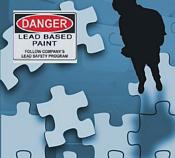 Looking for accurate information about the EPA RRP rule?
Looking for accurate information about the EPA RRP rule?  Many liability insurance policies do not cover lead poisoning or contamination. Renovators should be sure they are working with an agent who is up on the EPA RRP rule and should sit down with their agent to review their coverage needs and options.
Many liability insurance policies do not cover lead poisoning or contamination. Renovators should be sure they are working with an agent who is up on the EPA RRP rule and should sit down with their agent to review their coverage needs and options. 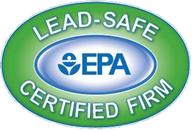 Increased risk of liability due to lead awareness as well as the government mandated certification requirements are likely to affect a renovator’s ability to get a policy as well as the premium charged by carriers who offer coverage. Tom told me he predicts that existing policies will not be renewed unless a renovator can show they are certified firms and use certified renovators to oversee the work their company performs. He also predicts insurance carriers will start requiring the insured’s proof of compliance with the rule as well as proof of compliance and insurance coverage for the trade partners the insured renovator works with. Tom stressed that this would be for both liability as well as workers compensation insurance coverages. He said that even if they are self-employed, insurance carriers will likely require all trade partners have their own workers compensation policies as a way to prevent injured or poisoned trade partners from claiming against the general contractor’s policy.
Increased risk of liability due to lead awareness as well as the government mandated certification requirements are likely to affect a renovator’s ability to get a policy as well as the premium charged by carriers who offer coverage. Tom told me he predicts that existing policies will not be renewed unless a renovator can show they are certified firms and use certified renovators to oversee the work their company performs. He also predicts insurance carriers will start requiring the insured’s proof of compliance with the rule as well as proof of compliance and insurance coverage for the trade partners the insured renovator works with. Tom stressed that this would be for both liability as well as workers compensation insurance coverages. He said that even if they are self-employed, insurance carriers will likely require all trade partners have their own workers compensation policies as a way to prevent injured or poisoned trade partners from claiming against the general contractor’s policy.  One other area that will likely be of concern is lead coverage in policies for landlords who own pre-1978 properties. Here too, compliance with RRP rules and documentation of work practices used for renovations and repairs will likely become required conditions of obtaining and keeping coverage. The EPA RRP rule may also cause an increase in insurance coverage on properties built prior to 1978, for landlords and maybe even home owners.
One other area that will likely be of concern is lead coverage in policies for landlords who own pre-1978 properties. Here too, compliance with RRP rules and documentation of work practices used for renovations and repairs will likely become required conditions of obtaining and keeping coverage. The EPA RRP rule may also cause an increase in insurance coverage on properties built prior to 1978, for landlords and maybe even home owners.
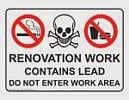 Second, the warning signs and barriers required to be put in place around exterior and common area containment areas will have a similar effect of raising concern. Unless properly educated about their options and about lead-safe work practices, neighbors and the parents of children attending child occupied facilities will again suffer from ignorance about lead. Many will likely react out of fear. This fear may potentially result in reporting a renovator and causing an inspection, even if the renovation work is being done within compliance.
Second, the warning signs and barriers required to be put in place around exterior and common area containment areas will have a similar effect of raising concern. Unless properly educated about their options and about lead-safe work practices, neighbors and the parents of children attending child occupied facilities will again suffer from ignorance about lead. Many will likely react out of fear. This fear may potentially result in reporting a renovator and causing an inspection, even if the renovation work is being done within compliance.  Remember, as a business you are guilty until you prove yourself innocent at your own expense. An OSHA and or RRP inspector will likely be able to find at least one violation of some rule if they show up at one of your jobsites. Some inspectors may even feel it is their obligation to find a violation. The cost to defend yourself might be as high as the cost of any fines, so even if you win you lose. In Massachusetts, the Department of Occupational Safety (DOS) is already collaborating with OSHA regarding what to do if either finds a violation that should be referred to the other. Oh, and don’t forget those neighbors who have a bone to pick with your customer, have nothing else to do all day, and or are just plain paranoid.
Remember, as a business you are guilty until you prove yourself innocent at your own expense. An OSHA and or RRP inspector will likely be able to find at least one violation of some rule if they show up at one of your jobsites. Some inspectors may even feel it is their obligation to find a violation. The cost to defend yourself might be as high as the cost of any fines, so even if you win you lose. In Massachusetts, the Department of Occupational Safety (DOS) is already collaborating with OSHA regarding what to do if either finds a violation that should be referred to the other. Oh, and don’t forget those neighbors who have a bone to pick with your customer, have nothing else to do all day, and or are just plain paranoid. In addition to the OSHA rules contractors should already have been aware of related to worker safety, the EPA RRP rule has added yet additional OSHA concerns for renovators. One for example is working on a surface covered with plastic. OSHA considerations related to working on plastic are not part of the curriculum delivered during the required EPA certified renovator training. Due to the absence of this information, the EPA is essentially leaving it up to renovators to become aware of such considerations on their own. Once aware, renovators must seek out the information they need and adjust their work practices accordingly to avoid fines from OSHA should they get randomly inspected. Or worse, have a worker accident.
In addition to the OSHA rules contractors should already have been aware of related to worker safety, the EPA RRP rule has added yet additional OSHA concerns for renovators. One for example is working on a surface covered with plastic. OSHA considerations related to working on plastic are not part of the curriculum delivered during the required EPA certified renovator training. Due to the absence of this information, the EPA is essentially leaving it up to renovators to become aware of such considerations on their own. Once aware, renovators must seek out the information they need and adjust their work practices accordingly to avoid fines from OSHA should they get randomly inspected. Or worse, have a worker accident.  This begs a few questions. First, were the authors ignorant of such considerations? Asked another way, does the left hand know what the right hand is doing? Is this another example of a breakdown in communication between very significant departments of our government charged to look out for our best interests? A second question might be; did the authors of the EPA RRP rule leave this information out of the rule for a strategic purpose? Perhaps this is just one more way to force small independent businesses out of the construction industry in favor or labor unions.
This begs a few questions. First, were the authors ignorant of such considerations? Asked another way, does the left hand know what the right hand is doing? Is this another example of a breakdown in communication between very significant departments of our government charged to look out for our best interests? A second question might be; did the authors of the EPA RRP rule leave this information out of the rule for a strategic purpose? Perhaps this is just one more way to force small independent businesses out of the construction industry in favor or labor unions.  Of bigger concern should be the distribution of misinformation at the certified renovator training. For example, using the sample signage included in the EPA approved training manual (required to be posted outside contained work areas), might just get you in trouble with OSHA. First off the RRP rule requires the use of a “warning” sign, but the sample sign is a “caution” sign. OSHA considers a warning sign to be a stronger message than a caution sign, and has rules dictating when and how to choose one versus the other.
Of bigger concern should be the distribution of misinformation at the certified renovator training. For example, using the sample signage included in the EPA approved training manual (required to be posted outside contained work areas), might just get you in trouble with OSHA. First off the RRP rule requires the use of a “warning” sign, but the sample sign is a “caution” sign. OSHA considers a warning sign to be a stronger message than a caution sign, and has rules dictating when and how to choose one versus the other. 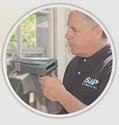 Many remodelers have shared with me that they have been entertaining the idea of become licensed lead inspectors. Recognizing the new EPA RRP rule as here to stay, many see doing inspections as an opportunity to diversify their business's offerings and at the same time add some much needed revenue due to our current economic challenges.
Many remodelers have shared with me that they have been entertaining the idea of become licensed lead inspectors. Recognizing the new EPA RRP rule as here to stay, many see doing inspections as an opportunity to diversify their business's offerings and at the same time add some much needed revenue due to our current economic challenges. Upon successful completion of the examination and a lead physical and blood test, you need to complete an apprenticeship program with a licensed Master Lead Inspector. It costs between $3,000 and $5,000 to do an apprenticeship. You must work with the Master Lead Inspector for a total of 80 hours and you must accompany the Master inspector on 15 inspections. The 15 inspections will consist of 7 Initial Inspections (5 using the XRF gun and 2 using sodium sulfide), 6 re-occupancy reinspections or final deleading reinspections, and 2 PCADs (post compliance assessment determinations).
Upon successful completion of the examination and a lead physical and blood test, you need to complete an apprenticeship program with a licensed Master Lead Inspector. It costs between $3,000 and $5,000 to do an apprenticeship. You must work with the Master Lead Inspector for a total of 80 hours and you must accompany the Master inspector on 15 inspections. The 15 inspections will consist of 7 Initial Inspections (5 using the XRF gun and 2 using sodium sulfide), 6 re-occupancy reinspections or final deleading reinspections, and 2 PCADs (post compliance assessment determinations).  Brand new XRF Machines go for anywhere from $15,000 to upwards of $30,000. You may be able to purchase one used from the manufacturer or online. It can cost upwards of $5,000 a year to maintain them.
Brand new XRF Machines go for anywhere from $15,000 to upwards of $30,000. You may be able to purchase one used from the manufacturer or online. It can cost upwards of $5,000 a year to maintain them.  Because of one of the EPA RRP amendments, there is a new requirement regarding documentation. As of the amendment that took effect on July 6th, 2010, when the final invoice for the renovation is delivered, or within 30 days of the completion of the renovation, whichever is earlier, the renovation firm must provide information demonstrating compliance with the training and work practice requirements of the RRP rule to the owner of the building being renovated and, if different, to the occupants of the renovated housing or the operator of the child-occupied facility.
Because of one of the EPA RRP amendments, there is a new requirement regarding documentation. As of the amendment that took effect on July 6th, 2010, when the final invoice for the renovation is delivered, or within 30 days of the completion of the renovation, whichever is earlier, the renovation firm must provide information demonstrating compliance with the training and work practice requirements of the RRP rule to the owner of the building being renovated and, if different, to the occupants of the renovated housing or the operator of the child-occupied facility.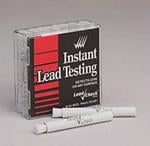

 Renovators doing RRP work will be involved with lead testing. Lead testing for RRP related projects can be done by the certified renovator, a certified lead inspector or certified lead risk assessor. The type of testing that can be done by each varies, but regardless of who does the testing written reports are required and, by law, certain individuals must be given a copy of those reports if lead is found. The EPA RRP rule is specific about
Renovators doing RRP work will be involved with lead testing. Lead testing for RRP related projects can be done by the certified renovator, a certified lead inspector or certified lead risk assessor. The type of testing that can be done by each varies, but regardless of who does the testing written reports are required and, by law, certain individuals must be given a copy of those reports if lead is found. The EPA RRP rule is specific about  Regardless of the original purpose of testing (RRP or any other purpose), once a reports exists, the Lead Disclosure Rule below dictates who must receive the reports and when in regards to the selling or leasing of a property. The rule also specifies what documentation must be created and maintained to prove the reports were distributed to the required parties. Because of the considerations of the Lead Disclosure Rule, I recommend renovators get the property owner's written permission prior to conducting any lead testing.
Regardless of the original purpose of testing (RRP or any other purpose), once a reports exists, the Lead Disclosure Rule below dictates who must receive the reports and when in regards to the selling or leasing of a property. The rule also specifies what documentation must be created and maintained to prove the reports were distributed to the required parties. Because of the considerations of the Lead Disclosure Rule, I recommend renovators get the property owner's written permission prior to conducting any lead testing.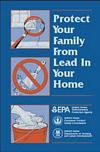 Give an EPA-approved information pamphlet on identifying and controlling lead-based paint hazards ("Protect Your Family From Lead In Your Home" pamphlet, currently available in English, Spanish, Vietnamese, Russian, Arabic and Somali).
Give an EPA-approved information pamphlet on identifying and controlling lead-based paint hazards ("Protect Your Family From Lead In Your Home" pamphlet, currently available in English, Spanish, Vietnamese, Russian, Arabic and Somali).
 One way to think about this might be to relate it to eating fish. The government often says that if you fish in certain bodies of polluted water, you can safely eat up to so many of the fish you catch without any health concerns. If the government says you can eat up to 3 fish a year, how safe would you feel eating even one fish? Using this analogy, how safe might the owner feel having renovations done if there is any lead present at all at their property?
One way to think about this might be to relate it to eating fish. The government often says that if you fish in certain bodies of polluted water, you can safely eat up to so many of the fish you catch without any health concerns. If the government says you can eat up to 3 fish a year, how safe would you feel eating even one fish? Using this analogy, how safe might the owner feel having renovations done if there is any lead present at all at their property? In a recent article about their efforts to address challenges for builders and remodelers due to the new EPA RRP rule, the National Association of Home Builders (NAHB) left out some critical information that causes their article to be very misleading to renovators and home owners unfamiliar with specific details about the RRP rule. In my opinion, the article also does a disservice to the manufacturer of
In a recent article about their efforts to address challenges for builders and remodelers due to the new EPA RRP rule, the National Association of Home Builders (NAHB) left out some critical information that causes their article to be very misleading to renovators and home owners unfamiliar with specific details about the RRP rule. In my opinion, the article also does a disservice to the manufacturer of  One way to think about this might be to relate it to eating fish. The government often says that if you fish in certain bodies of polluted water, you can safely eat up to so many of the fish you catch without any health concerns. If the government says you can eat up to 3 fish a year, how safe would you feel eating even one fish? Using this analogy, how safe might the home owner feel having renovations done without using lead-safe work practices if there is any lead at all present at their property? The choice should be theirs.
One way to think about this might be to relate it to eating fish. The government often says that if you fish in certain bodies of polluted water, you can safely eat up to so many of the fish you catch without any health concerns. If the government says you can eat up to 3 fish a year, how safe would you feel eating even one fish? Using this analogy, how safe might the home owner feel having renovations done without using lead-safe work practices if there is any lead at all present at their property? The choice should be theirs.


